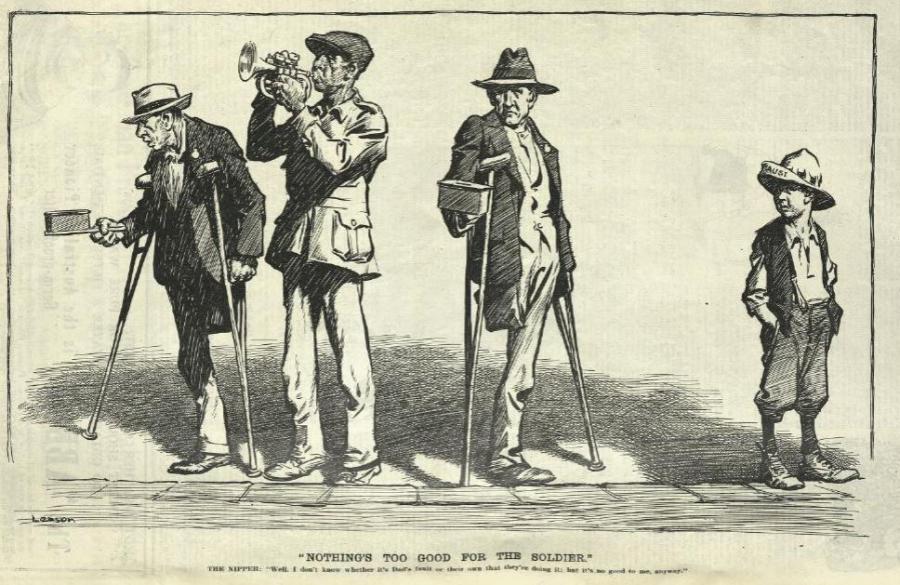A changing nation
Forging The Nation - Towards the Future
- Forging the Nation: home
- Federation
- National identity
- Seeking security
- The First World War
- Towards the future
- Australians
- Introduction
- A changing nation
- England to Australia by air
- Prince of Wales' visit
After the war Australia could never be the same. The war was the cause of great private grief and public mourning. Communities constructed war memorials to mark their contributions and their losses. Adding to the toll of war dead, the influenza epidemic caused 12,000 civilian deaths in 1919.
The nation had also been tested in other fields. It had to discover the maturity to handle internal division and conflict. Little had been resolved in understanding the Aboriginal population's place; women's contributions were still largely unacknowledged; religious and political sectarianism was rife; and labour disputes could be bitter and brutal.
That a new age was about to begin was demonstrated in the field of aviation. Previously Australia could be reached only by sea, but in 1919 two brothers, Keith and Ross Smith, flew an aircraft from England to Australia. The following year an airline company called Qantas (Qld & NT Aerial Services) was formed, and in 1921 the Royal Australian Air Force was established. As the world began to shrink, ties with Britain began to stretch and memories of the colonial past began to fade.

Nothing's too good for the soldier
From The Bulletin 29 September 1921, pg 10. By permission of National Library of Australia.
Between February and July 1919 the virulent strain of pneumonic influenza which had been sweeping the world reached Australia and caused thousands of deaths. Schools and public places closed and people wore face masks. State governments had to recruit volunteers to assist in the care of the sick and to prevent infection.
In 1921 the first of the twelve volumes of the Official history of Australia in the war of 1914-18 was published. In it C.E.W. Bean told the story of the Gallipoli campaign. Bean also edited the entire series. Behind the recital of historical facts was a purpose: to show, as he put it, "how did the Australian people - and the Australian character, if there is one - come through the test of this, their first great war?" This photograph shows the first volume packed and ready for transport from Canberra to the publishers in Sydney in December 1920. Bean is standing at the centre.
The complex character of the Catholic Archbishop of Melbourne, Dr Daniel Mannix, is demonstrated by his association with both Australian war heroes and the gambling and sporting promoter John Wren. An Irish-nationalist, Mannix was prominent among the opponents of conscription during the war. In the face of mounting accusations of disloyalty, Wren arranged for 14 Victoria Cross winners riding white horses to lead the 1920 St Patrick's Day parade. John Hamilton, VC received this presentation photograph to acknowledge his participation.


